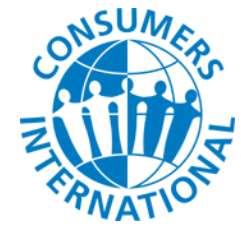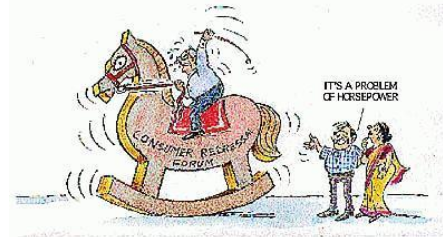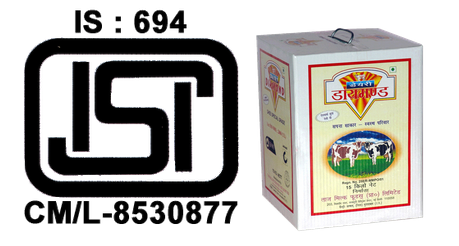
Consumer Rights
Consumer Rights of Class 10
SAFETY IS EVERYONE’S RIGHT:
- Reji’s suffering shows how a hospital, due to negligence by the doctors and staff in giving anesthesia, crippled a student for life.

- While using many goods and services we have the right to be protected against the marketing of goods and delivery of services that are hazardous to life and property.
- Producers need to strictly follow the required safety rules and regulations.
- There are many goods that require special attention to safety.
- For example, pressure cookers have a safety value which, if it is defective, can cause a serious accident. The manufacturers of the safety valve have to ensure high quality.
- You also need public or government action to see that this quality is maintained.
Information about Goods and Services:
Consumers have the right to be informed about the particulars of goods and services that they purchase. Consumers can then complain and ask for compensation or replacement if the product proves to be defective in any manner. Similarly, one can protest and complain if someone sells a good at more than the printed price on the packet. This is indicated by 'MRP' - maximum retail price. In fact consumers can bargain with the seller to sell the product at less than the MRP. In October 2005, the Government of India enacted a law, popularly known as RTI (Right to Information) Act, which ensures its citizens all the information about the functions of government departments.
When Choice Is Denied:
Any consumer who receives a service in whatever capacity, regardless of age, gender and nature of service, has the right to choose whether to continue to receive the service. Consumer can choose the products from the given alternatives. In case of a single supplier, consumer must be assured of quality and price of the good.
Where should consumers go to get justice?
- These are some examples in which consumers are denied their rights. Such instances occur quite often in our country.
- Consumers have the right to seek redressal against unfair trade practices and exploitation.
- If any damage is done to a consumer, she has the right to get compensation depending on the degree of damage.

Redressal
- Let us take the case of Prakash. He had sent a money-order to his village for his daughter’s marriage. The money did not reach his daughter at the time when she needed it nor did it reach months later. Prakash filed a case in a district level consumer court in New Delhi.
- The consumer movement in India has led to the formation of various organisations locally known as consumer forums or consumer protection councils.
- If you are living in a residential colony, you might have noticed name boards of Resident Welfare Association.
- If there is any unfair trade practice meted out to their members they take up the case on their behalf.
- Under COPRA, three-tier quasi-judicial machinery at the district, state and national levels were set up for redressal of consumer disputes.
- The district level court deals with the cases involving claims upto Rs. 20 lakhs, the state level courts between Rs. 20 lakhs and Rs. 1 crore and the national level court deals with cases involving claims exceeding Rs. 1 crore.
- Thus, the Act has enabled us as consumers to have the right to represent in the consumer courts.
STEPS TAKEN BY GOVERNMENT FOR PROTECTION OF CONSUMERS:
Legislative step:
Various Acts have been formed, the most important Act is :
- Consumer Protection Act, 1986: To solve the consumer grievances in a speedy, simple & inexpensive manner. Under this three types of courts have been established.
- Separate departments for consumer welfare have been established in both central and state government.
Administrative steps:
- Public distribution system has been established for preventing the exploitation of consumers.
- Government tries to prevent illegal ways of making profit like hoarding and black marketing.
Technical steps:
Government has established various agencies for developing standard for various products and to check and certify the products according to the standards. In India, two agencies are responsible for it.
- BIS or Beureau of Indian standards: Sets the standards for industrial products, checks them and certifies them with ISI mark. Through regular surveillance and taking samples both from market and factories ensures the standards of the products.
- AGMARK: Established under the Ministry of Agriculture is responsible for certifying the food and agricultural products.
At International level:
- ISO or International Standards Organization: Anon-governmental organization with its headquarters located in Geneva, creates standards through international agreements and certifies companies, goods and institutions with ISO 6000, ISO 14000 etc. certificates which indicates specific levels of standards.
- Codex Alimentarius Commission: It was created in 1963 by FAO and WHO. It develops food standards, guidelines and codes of practices for production and international trade in food products.
LEARNING TO BECOME WELL-INFORMED CONSUMERS:
- When we as consumers become conscious of our rights, while purchasing various goods and services, we will be able to discriminate and make informed choices.
- This calls for acquiring the knowledge and skill to become a well informed consumer.
- The enactment of COPRA has led to the setting up of separate departments of Consumer Affairs in central and state governments.
ISI and Agmark
While buying many commodities, on the cover, you might have seen a logo with the letters ISI, Agmark or Hallmark. These logos and certification help consumers get assured of quality while purchasing the goods and services. The organisations that monitor and issue these certificates allow producers to use their logos provided they follow certain quality standards.

Bhattar Cable Industries Pure Ghee as per Agmark
Though these organisations develop quality standards for many products, it is not compulsory for all the producers to follow standards. However, for some products that affect the health and safety of consumers or of products of mass consumption like LPG cylinders, food colours and additives, cement packaged drinking water, it is mandatory on the part of the producers to get certified by these organsations.
FEATURES OF COPRA 1986:
- Under COPRA 1986, a separate department called consumer affairs department has been formed at the union and state level.
- A three-tier quasi judicial system popularly called consumer courts has been established at the national, state and district level.
- At the national level it is called national consumer court. It can try cases which deal with claims exceeding Rs 1 crore.
- At the district level it is called district consumer courts or consumer forums. It can solve dispute which involves a claim of Rs 20 Lakh and less.
- At the state level it is called the state consumer commission. It can solve disputes which involves a claim of Rs 20 lakh one crore.
- Job of these courts is to provide speedy justice at a very low cost within a time limit.
Related Topics









